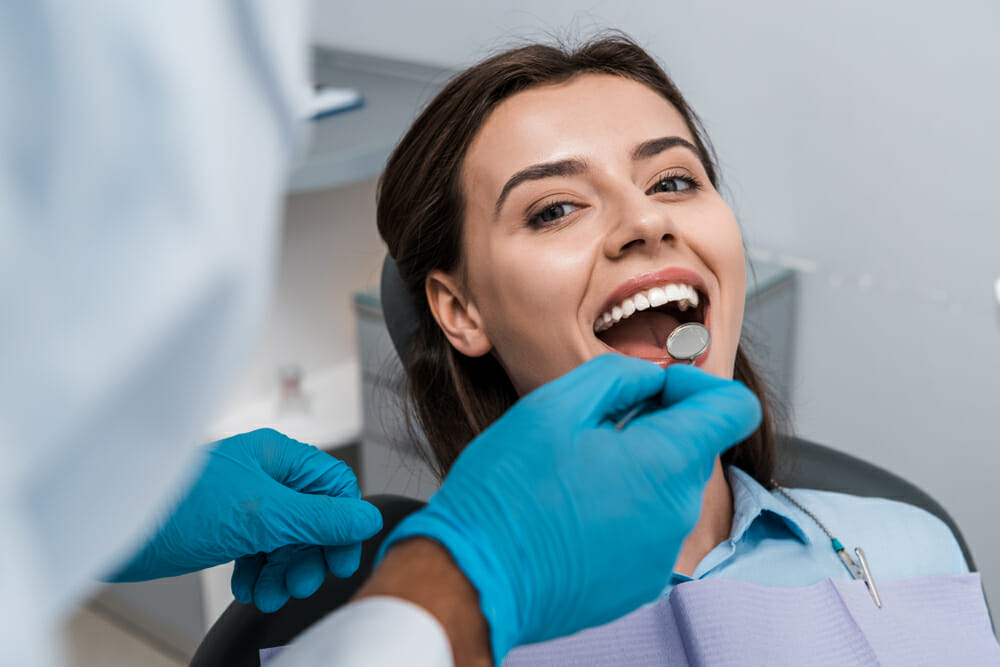Legacy Orthodontics Fundamentals Explained
Table of ContentsThe Best Guide To Legacy OrthodonticsThe Best Guide To Legacy OrthodonticsOur Legacy Orthodontics IdeasTop Guidelines Of Legacy OrthodonticsHow Legacy Orthodontics can Save You Time, Stress, and Money.
In addition, we use flexible therapy schedules, adaptable payment choices and an enjoyable, enjoyable experience.An orthodontist is a dentist educated to detect, prevent, and treat teeth and jaw abnormalities. Orthodontists work with individuals of all ages, from children to grownups.
Malocclusion, or misaligned teeth, can cause oral issues, including dental cavity, periodontal condition, and challenging or excruciating eating. But not everybody is birthed with straight teeth. If you have a poor bite or big rooms between your teeth, you may wish to seek advice from a dentist concentrating on orthodontic care.
Things about Legacy Orthodontics
( Picture Credit History: DigitalVision/Getty Images) Orthodontists make use of taken care of and removable dental tools, like dental braces, retainers, and bands, to alter the position of teeth in your mouth. Orthodontic therapy is for oral problems, including: Uneven teethBite issues, like an overbite or an underbiteCrowded teeth or teeth that are also far apartJaw misalignmentThe goal of orthodontic therapy is to improve your bite.
A healthy bite guarantees you can consume, chew, and speak appropriately. While you could consider orthodontists as primarily for kids or young adults that need braces, they can deal with dental issues at any type of age. Orthodontists participate in college, dental institution, and orthodontic college. After graduation, they invest 2 or 3 years in an orthodontic residency program.
, but not all dental experts are orthodontists. They focus on 2 areas: Just how to correctly and safely relocate teeth Just how to appropriately direct development in the teeth, jaw, and faceOnce an orthodontist has actually finished training, they have the choice to become board certified.
The 5-Second Trick For Legacy Orthodontics
Imbalance, or malocclusion, is the most usual factor individuals see an orthodontist. It is genetic and is the result of dimension differences between the top and lower jaw or in between the jaw and teeth. Malocclusion results in tooth overcrowding, a twisted jaw, or uneven bite patterns. Malocclusion is generally treated with: Your orthodontist connects steel, ceramic, or plastic square bonds to your teeth.
If you have only small malocclusion, you may be able to use clear dental braces, called aligners, as opposed to traditional braces (https://legacyortho.godaddysites.com/f/your-path-to-a-perfect-smile-finding-the-right-leesburg-orthodo). Some people need a headgear to help move teeth into line with stress from outside the mouth. After braces or aligners, you'll need to use a retainer. A retainer is a personalized tool that maintains your teeth in position.
They can produce added space in the mouth without having to draw teeth. Orthodontists use cords, surgical screws, or plates to support your jaw bone.
You might need to see an orthodontist if you have: Crowding or not adequate room for all of your teethOverbite, when your top teeth come your bottom teethUnderbite, when your base teeth are too much forwardSpacing or concerns with gapsCrossbite, which is when your upper teeth fit behind your bottom teeth when your mouth is closedOpen bite or an upright space between your front bottom and upper teethMisplaced midline, when the facility of your base and top teeth do not line up Fixing an oral malocclusion can: Make biting, chewing, and speaking easierImprove the proportion of our face and your overall appearanceEase pain from temporomandibular joint problemsDifferent your teeth and make them much easier to clean, helping prevent dental caries or cavities It's often a dentist that first notifications misaligned teeth during a routine examination.
Unknown Facts About Legacy Orthodontics

Throughout your very first orthodontic consultation, you'll likely have: An oral over here examPhotos taken of your face and smileDental X-raysPanoramic (360 degree) X-rays of your face and headImpressions to produce molds of your teethThese examinations will help your orthodontist know just how to proceed with your treatment. leesburg orthodontics. An orthodontist is a dental expert who's had training to treat your teeth and jaw
An orthodontist is focused on your bite, so something like a cracked tooth would certainly be handled by a dental professional. Orthodontists are focused on your bite, or the method your teeth fit together, and the straightness of your teeth.
Ever before wondered just how celebrities constantly seem to have completely straightened teeth? Orthodontists are dental professionals that concentrate on dealing with abnormalities in the teeth and jaws.
The 30-Second Trick For Legacy Orthodontics

While braces are the most typically acknowledged orthodontic therapy, orthodontists have a varied toolkit at their disposal. The specific method selected depends on the seriousness of the situation, the client's age, and private choices. These tried-and-true braces utilize a system of brackets bonded to the teeth and connected by cables.
Clear aligners, like Invisalign, are a popular choice for individuals looking for a more discreet therapy choice. These detachable trays are custom-made to gradually change the teeth's placement. Headwear might be utilized together with braces or aligners to apply additional targeted forces, particularly for fixing jaw inconsistencies. In situations of slim jaws, palatal expanders can be made use of to develop area for appropriate tooth positioning.